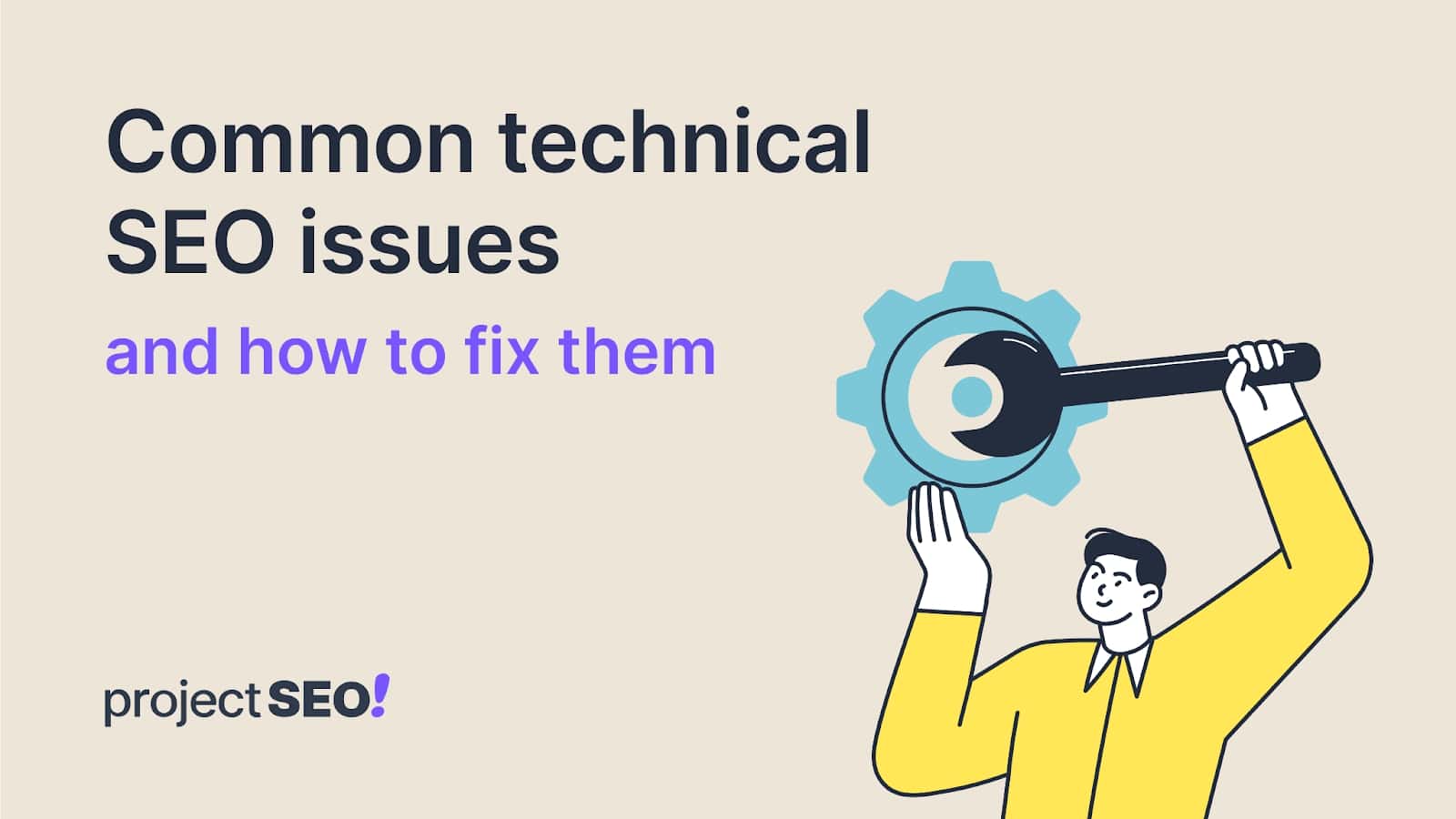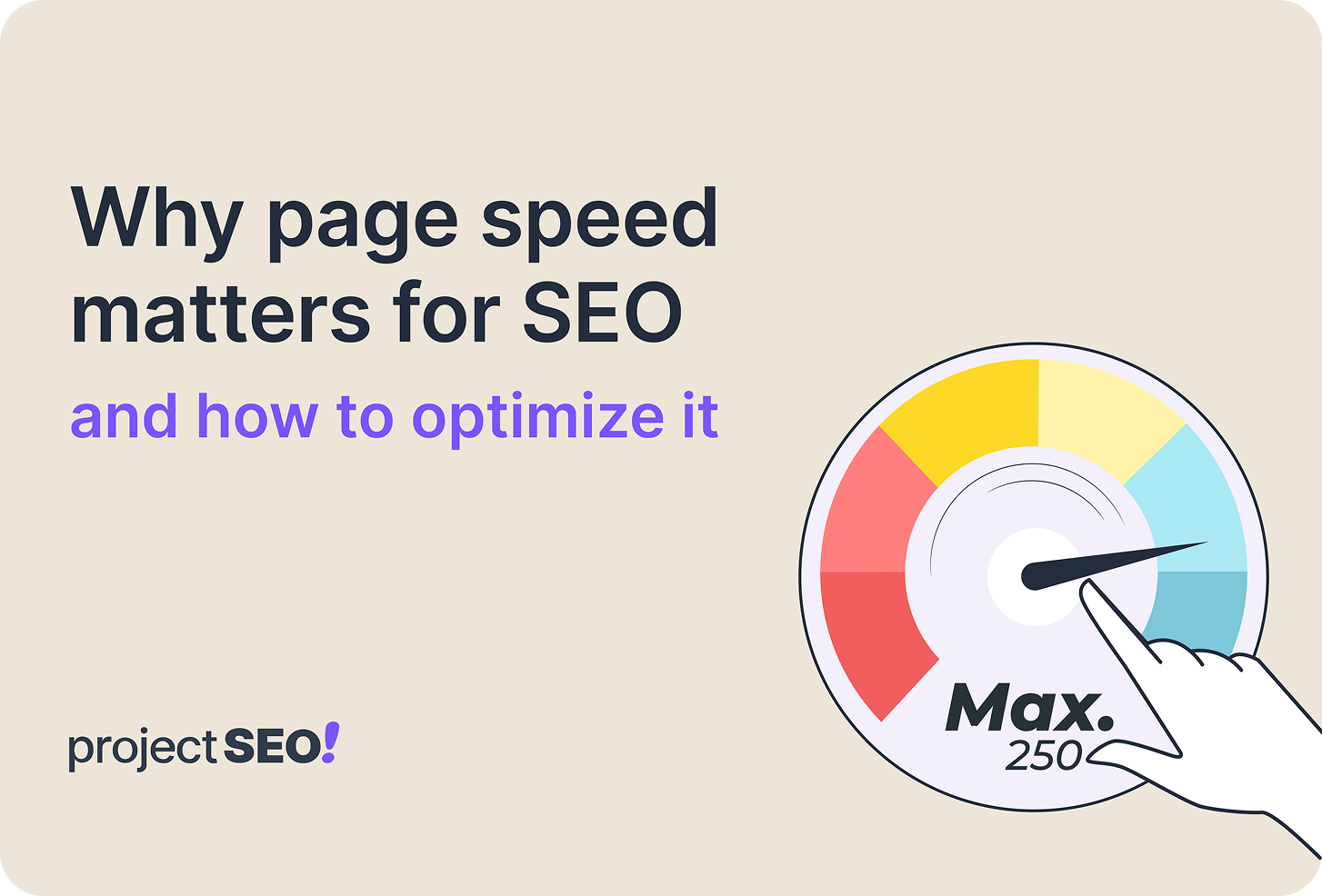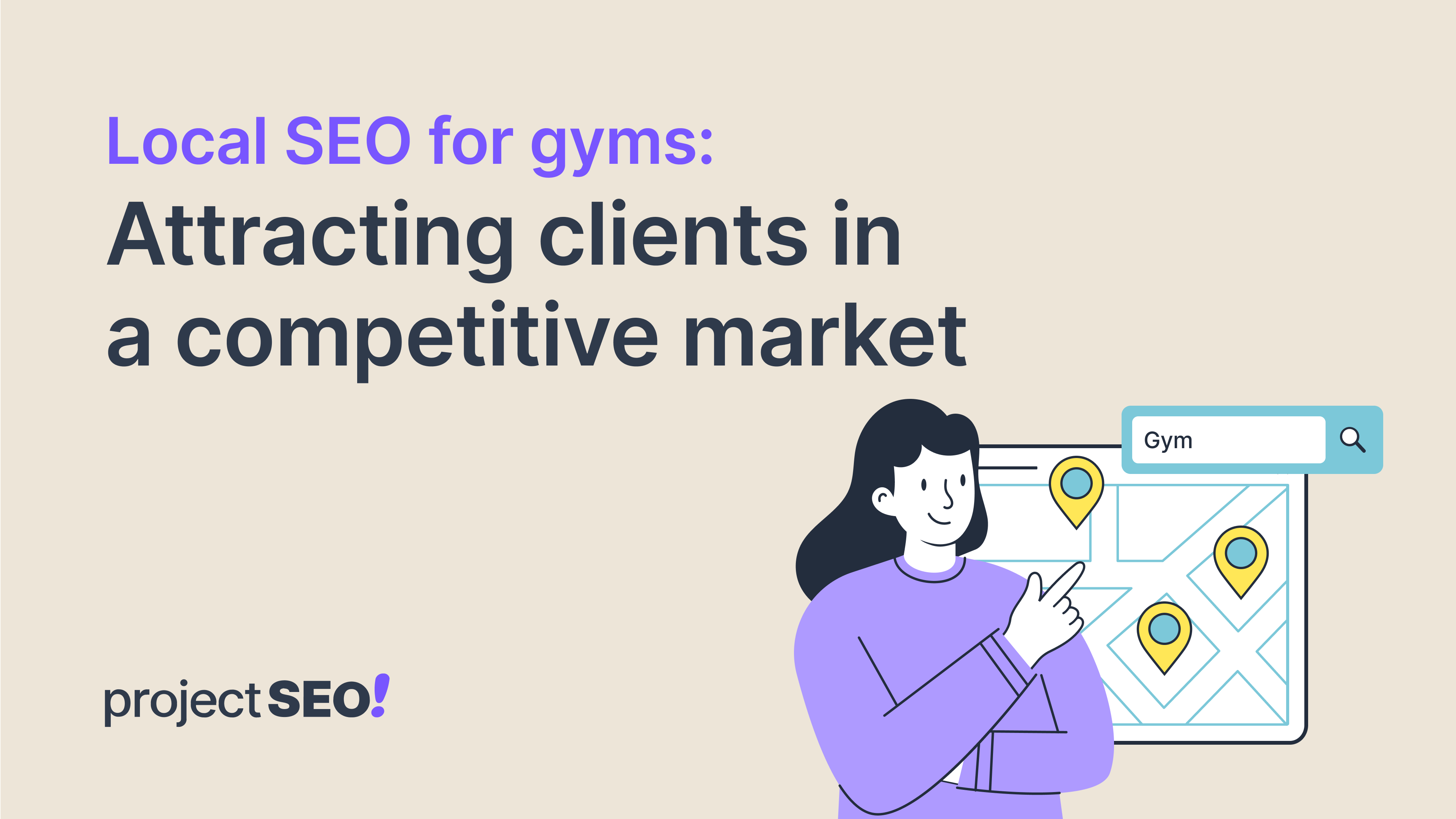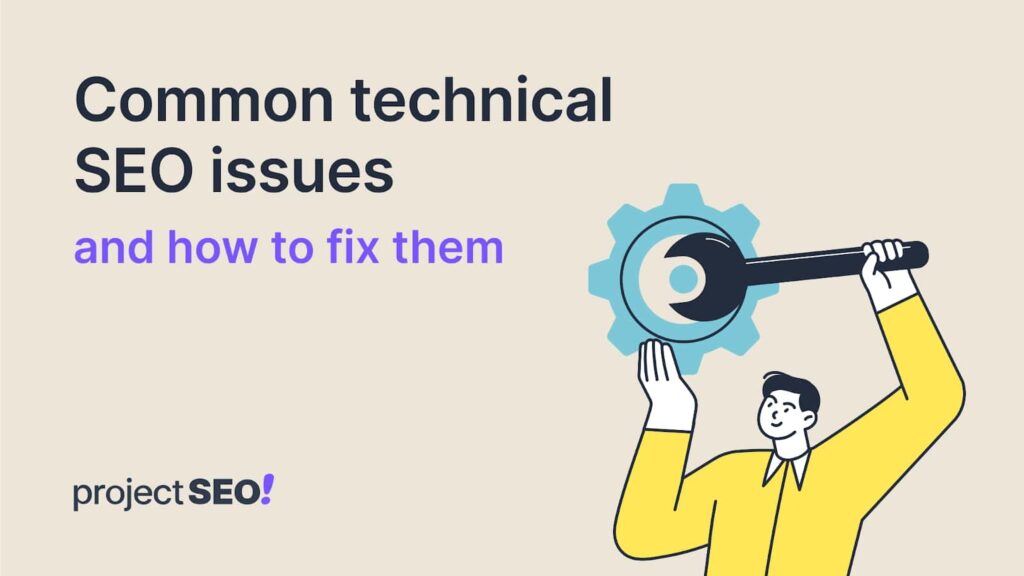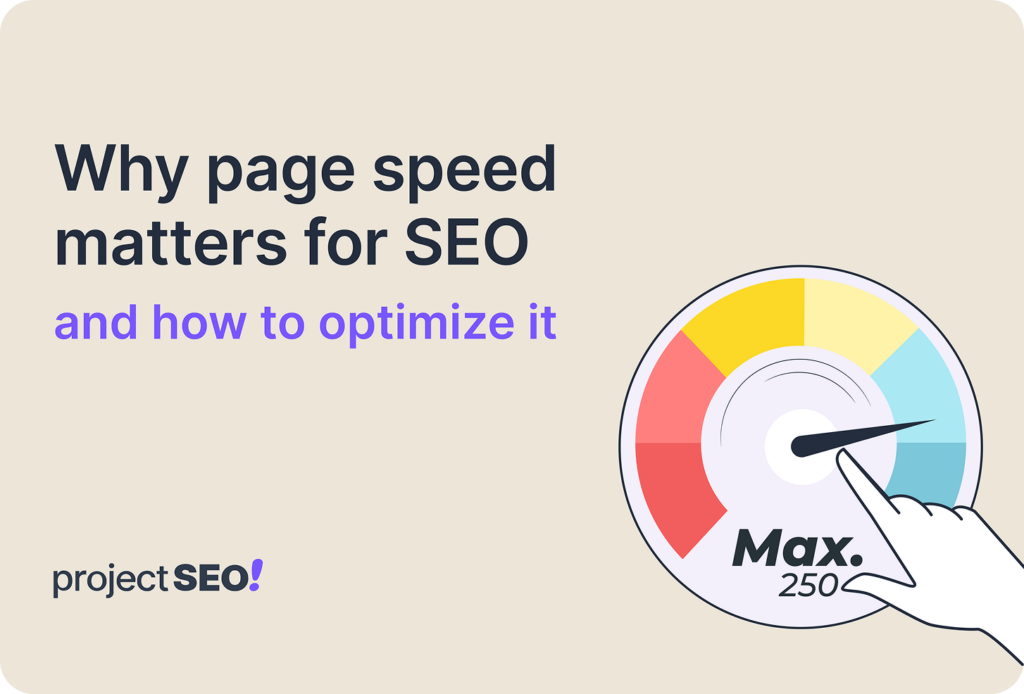SaaS SEO is fiercely competitive.
Vying for those top spots on Google can be a challenging and costly endeavor.
Over the last decade, we’ve refined this process – helping an array of SaaS companies boost their customer base through enhanced Google visibility.
In the SaaS realm, nuances abound. The SEO strategy for a CRM software provider will differ slightly from that of a cloud security service.
In this post, we’re going to dissect the specific process of ranking a SaaS website, particularly one offering subscription-based software solutions.
Let’s dive in.
The 3 part SEO process
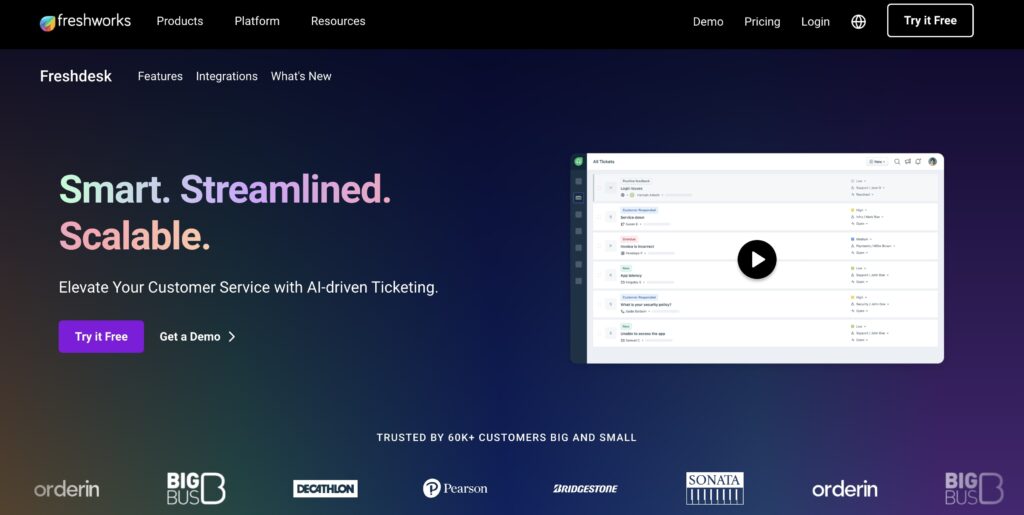
Our analysis always focuses on the 3 core parts of an SEO strategy:
- Technical SEO
- Content (web copy, landing pages, blogs)
- Links (also known as backlinks)
Campaign goals
For a SaaS company aiming to acquire new customers and boost revenue, the objectives of SEO are:
- Enhance rankings for bottom-funnel keywords: (In this case: “CRM meeting” and related keywords). The web pages at the bottom of the funnel are instrumental in converting web visitors into paying subscribers.
- Ascend in search engine rankings for top-of-the-funnel keywords: Generate more qualified inbound leads. These keywords/search terms enable you to connect with a larger audience actively seeking your software solutions.
- Expand reach and brand awareness: Increase the number of potential customers aware of your offerings (e.g., through targeted content, placements on relevant platforms, and other strategies we’ll explore in this article).
We’ll guide you on enhancing your SEO, boosting web traffic, and acquiring more customers.
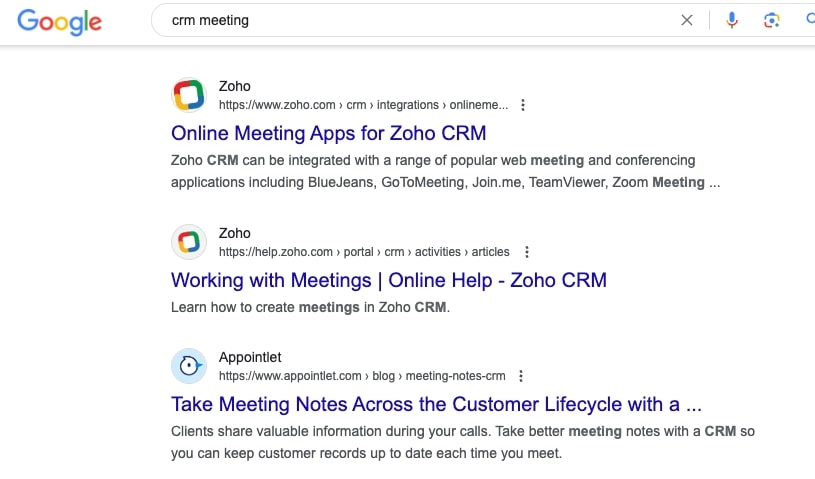
You can implement many of these strategies independently. Alternatively, partnering with agencies like ProjectSEO can facilitate achieving the desired outcomes more efficiently.
11 SEO tips to boost your SaaS website
As a SaaS company, it’s essential to have a strong online presence. Here are 11 SEO tips that can help boost your SaaS website:
1. Detect and correct technical barriers
At ProjectSEO, we begin every SEO project with a check of the website’s basics.
This is important because if there are any issues with the website that stop visitors from coming, we need to fix those first. Only then can we start using different methods to bring more people to the site.
We use a tool called Screaming Frog to see how search engines, like Google, look at a website.

Are the pages being crawled and indexed by Google?
Are there misused page directives (canonical tags, NOINDEX tags, etc)
Are there any 404 error pages or broken links?
Are there any 301 redirects?
Are any of the pages thin on web copy or no longer relevant?
- Are there any broken backlinks? Ahrefs is a great tool for checking this.
Next, we shift our focus to reviewing the content (web copy, content on pages, articles). There’s a good chance that’s the main reason websites aren’t getting enough traffic.
2. Create an effective page network
Google aims to rank websites that adhere to its Webmaster Guidelines in terms of proper structure.
In the context of a SaaS website, following these Guidelines translates into this overarching structure:
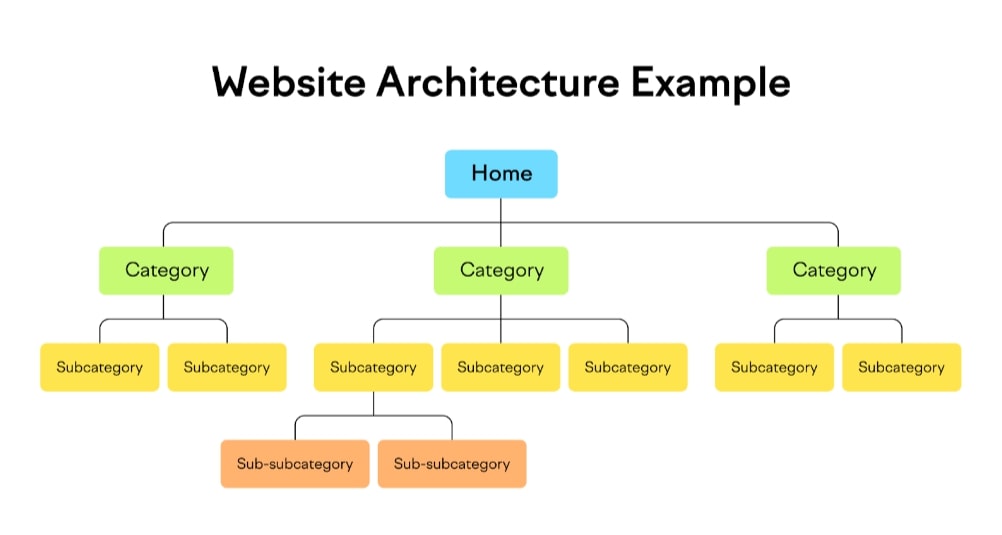
Freshdesk uses top-level navigation, helping users quickly identify what they want to see.
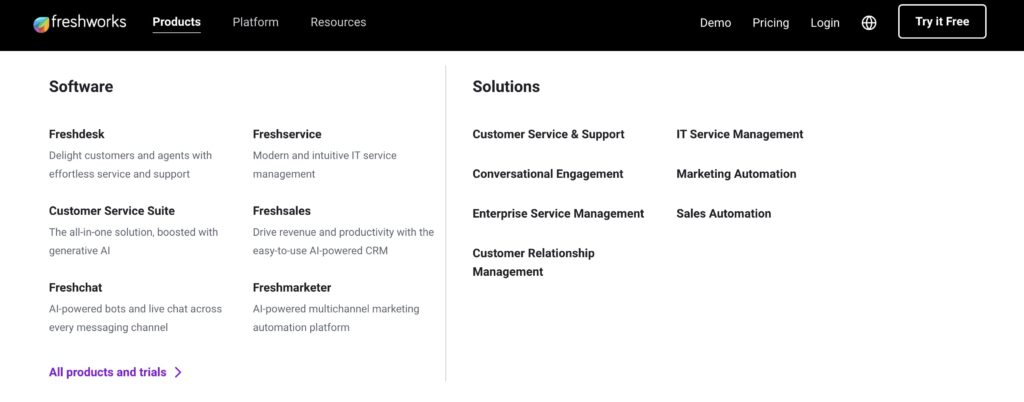
We prefer adhering to this structure as it offers a flexible framework for the website, facilitating the addition of various content types, including pages for case studies for the tool.
3. Optimize on-page components for essential pages
Practice area pages need to satisfy 2 goals:
- Offer clarity and establish authority to achieve higher Google rankings
- Convince site visitors to contact and engage your services
In our audit of the website, we found these pages to be lacking in content and requiring additional depth to rank effectively.

- Expand pages with bottom-funnel keywords to increase visitor conversions
- Refine the incorporation of subheadings, internal links, and compelling web copy
- Increase the volume of text/content on the site
- Infuse personality through images, videos, and testimonials
- Amplify traffic from Google by targeting search-intent driven keywords and content
Remember, while people skim, search engines scrutinize every word.
An increase in text volume, or long-form content, correlates with higher search engine rankings. It’s not merely about the word count that Google is interested in but the depth and comprehensiveness of the content. Pages rich in text indicate an authoritative grasp on topics, enhancing the site’s appeal to search engines.
For instance, a comprehensive article on a SaaS-related topic signals your expertise in the field. Such long-form content, especially those exceeding 2,000 words, tends to rank higher in search engine results pages (SERPs) because it’s viewed as thorough and authoritative.
Moreover, in-depth articles are magnets for backlinks, an essential element propelling websites to higher rankings.
4. Implement clear subheadings, strengthen internal linking, and boost web copy engagement
On service pages (as well as blog posts), it’s vital to have subheadings that are organized and make sense.
Remember, most people are skimmers, not readers, especially when they’re looking at something on their phone.
Here’s the breakdown:

- Subheadings are your roadmap: They should be clear and concise, summarizing the content effectively. Their role is to navigate visitors through the content, leading them towards the desired actions, be it making a call, sending an email, or filling out a contact form.
- Internal links are your best friends: These not only enhance user experience but also boost SEO. Anchor these links with keywords, establishing coherent connections between different pages and blog posts. They are invaluable assets; use them wisely.
- Web copy is your sales pitch: Particularly on service pages, every sentence and subheading should be crafted to compel the visitor. Whether it’s to make a call, drop an email, or complete a form, the words should motivate the reader to take that step.
Each element, from clear subheadings to strategic internal linking and compelling web copy, plays a pivotal role in enhancing both user experience and SEO, driving engagement and conversions.
5. Bring life to your content: include images, videos, and testimonials
People connect with people – it’s a simple truth.
What led you to this article?
Perhaps you stumbled upon videos on platforms like YouTube, TikTok, or Facebook, or browsed through photos on Instagram. Your curiosity was piqued, and you wanted to delve deeper.
That’s where the magic of video comes into play!
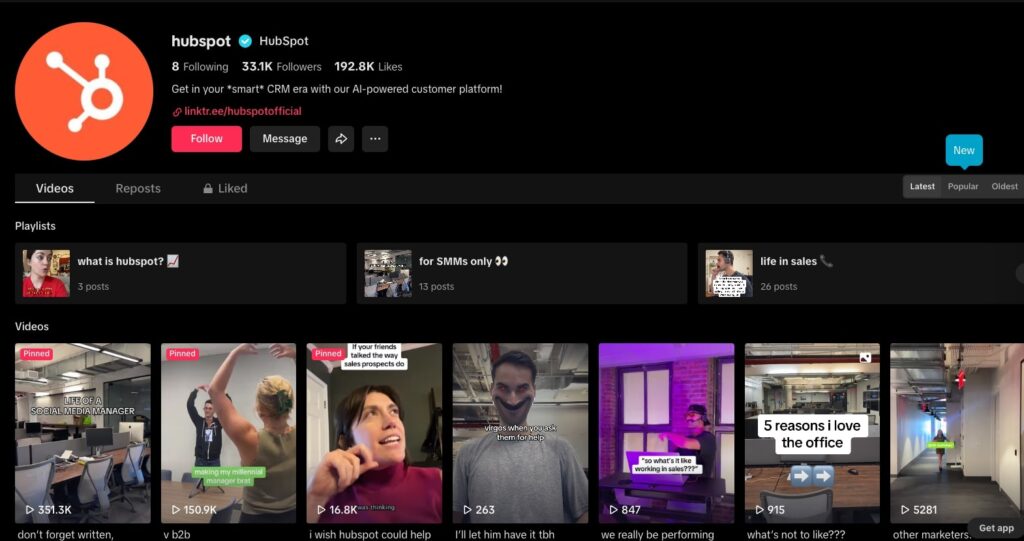
We always urge our clients to embrace the world of video. Start capturing moments and sharing them online. Videos offer a glimpse of the personality behind the brand. And the good news? All it takes is a smartphone capable of recording high-quality videos and basic editing tools.
And let’s not overlook the impact of images. Shots of you engaged in work, interacting with clients, or involved in significant activities offer insights into your world. Testimonials, too, are golden. They are the voice of satisfied clients and a testament to your expertise and service quality. Make it a point to share these positive reviews generously.
6. Elevate the funnel: Attract more Google traffic with search-intent-driven keywords and content
At the top of the funnel, the focus is on attracting traffic based on the queries potential clients are typing into search engines, for instance:
- How do I find the best CRM software for small businesses?
- Who’s the top cloud service provider in the tech industry?
- Best project management tools for startups

Craft content that enhances referral generation by focusing on top-of-the-funnel materials.
Respond to common questions related to SaaS to engage and increase the audience at the funnel’s entry point.
Next, we will explore more techniques guaranteed to elevate traffic for SaaS providers.
7. Understand your audience
Gaining a deep insight into your target audience is crucial for crafting impactful SEO content. Develop a buyer persona to identify specific interests and pain points, and employ surveys and analytics for a nuanced understanding. Utilize this data to tailor content that aligns with and resonates with your audience’s needs and preferences.
Leverage these insights to adapt your SEO strategies, ensuring your content addresses the unique needs of your audience with precision. This personalized touch not only fosters engagement but also builds trust and loyalty, establishing your brand as a preferred solution in your niche.
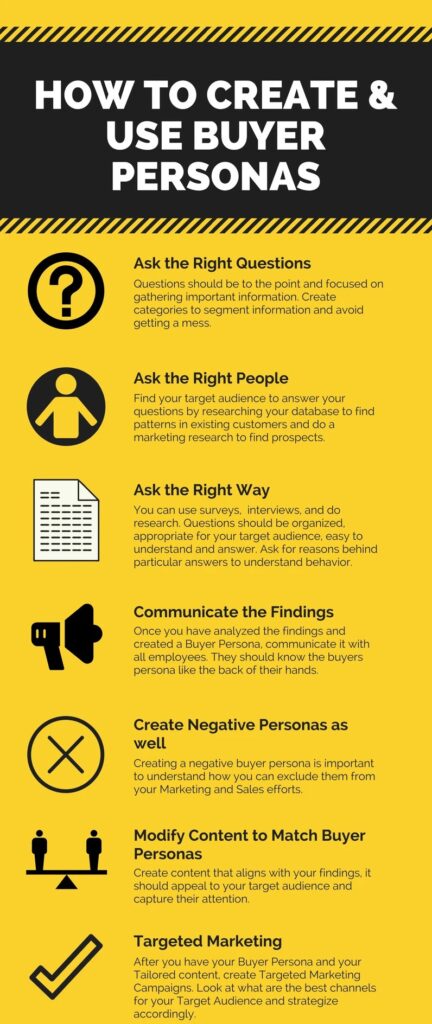
8. Develop a problem-solution keyword blueprint
Create a keyword strategy targeting your audience’s specific challenges and the solutions provided by your SaaS. Identify common problems using detailed research and analytics to understand search trends and user behaviors.
Incorporate keywords reflecting these problems and pair them with solution-oriented phrases that underscore your software’s benefits. Utilize long-tail keywords for targeted reach and mix in broader terms to capture a wider audience. Regularly refine this strategy to stay aligned with changing needs and trends, ensuring your content is always relevant and impactful.
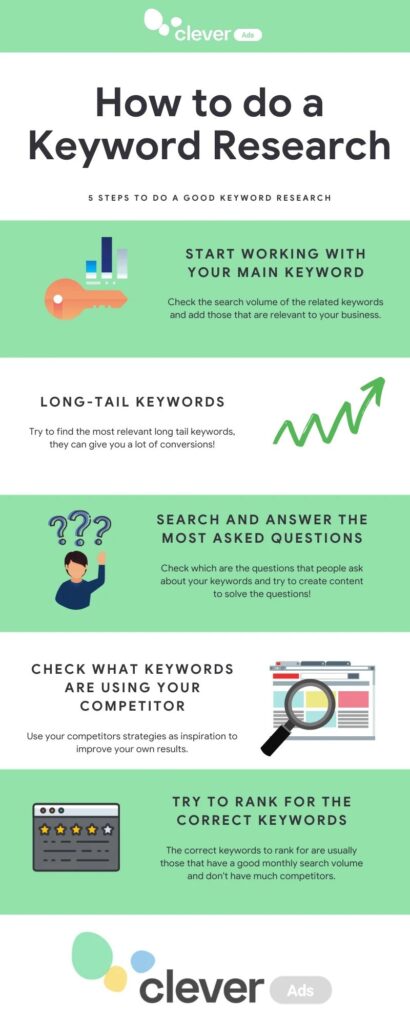
9. Optimize linking strategies to increase rankings and attract more traffic
In the vast arena of online popularity, Google counts links as votes.
For instance, if Forbes featured our example in their top 10 SaaS companies list, it would signal to Google the company’s prominence. A backlink from a high-traffic site like Forbes serves as a significant endorsement, boosting SEO ranking.
Securing links (backlinks) can be challenging for SaaS providers, yet here’s the approach to master it:
1. Contextual guest posting
Guest blogging involves creating and sharing content on other companies’ websites or blogs. It’s a powerful method for positioning yourself as a thought leader in the SaaS industry and securing high-quality backlinks from respected sites.
Here’s a straightforward way to find guest blogging opportunities:
- Google search:
- Use Google or any list-building tool you prefer, and enter a search operator like: {keyword} intitle:contributor. Replace “contributor” with terms like “guest contributor,” “guest blog,” or “write for us” to find varied results.
- Compile a list:
- Gather the search results into a comprehensive list. Use Ahrefs’ batch analysis tool to organize this list. Then, filter it by Domain Rating (DR) to prioritize the most authoritative and relevant sites.
- Craft your bio:
- Develop a professional bio that showcases your expertise in the specific niches of the websites you’re targeting.
- Identify content gaps:
- Analyze the target websites to identify any content gaps or topics they haven’t covered extensively.
- Pitch your ideas:
- Propose a unique article idea, offering three distinct topics, ensuring they fill the identified content gaps and align with the website’s theme.
2. Promoting linkable content via social ads
This approach involves promoting your most engaging and shareable content to a specific audience segment using remarketing or lookalike audience strategies. While the links generated from these ads may not be highly valuable in themselves, presenting a link-worthy asset to the appropriate audience can lead to organic link building over time.
The strategy encompasses:
- Remarketing campaigns on platforms like Facebook, Twitter, or LinkedIn to re-engage previous visitors or interactors.
- Utilizing niche ads on Reddit to reach a targeted and engaged audience.
- Targeting lookalike audiences that mirror the characteristics of individuals who have shown significant engagement with your content previously.
One example that I see a lot, I’m assuming because I read their blog or am a lookalike audience, is Ahrefs’ ads for an information architecture article.
Although Ahrefs certainly has case studies or unique data that is more linkable, sometimes a simple topic may be the most relevant to the niche.
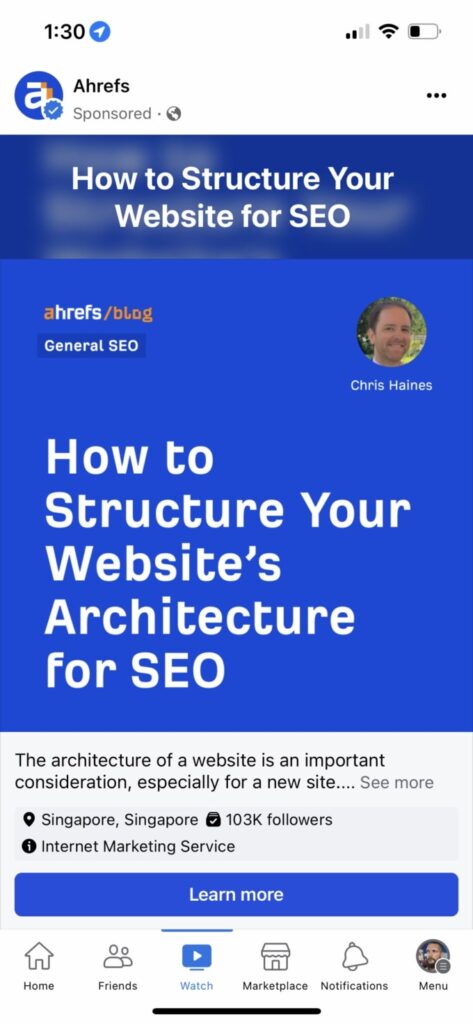
3. Passive PR for management & team members
A currently favored strategy in the SaaS industry is to engage in answering pertinent questions and positioning subject matter experts (SMEs) as go-to resources for bloggers and media professionals.
While the wave of passive PR is ushering in new tools, a significant number are notably sourced from HARO. However, here are some distinct networks that can be instrumental for initiating your investigative and pitching processes:
- HARO: Help a reporter out.
- #journorequest.
- Terkel.
- Quoted.
- SourceBottle.
4. Resource links
A resource page is a specialized webpage that offers handy links and resources, usually tailored to a particular industry or area of interest. While traditional pages that simply list links are still common, SaaS businesses often encounter a plethora of software listicles and resource articles.
Take this HubSpot example, which is a classic illustration of a resource list article. If your offering is genuinely valuable, reaching out directly to the article’s author or the hosting website could result in obtaining a prized link, eliminating the need for producing additional content.
You can locate such opportunities using a modified version of the following search operator:
Intitle:{keyword} and (intitle:best OR intitle:resource OR intitle:top)
10. Engage in regular performance analysis
Regularly evaluate your SEO efforts to highlight improvement areas and measure successes. Tools like SEMrush, Ahrefs, and Google Analytics are essential for tracking organic traffic and keyword rankings. Assess key metrics, perform competitive analysis for benchmarking, and conduct periodic SEO audits to identify and rectify technical issues. Use the gathered insights to refine your SEO strategies for enhanced performance and results.
11. Foster a culture of continuous learning
Embrace a continuous learning ethos by keeping abreast of the newest SEO trends and practices. Conferences, industry blogs, and interactions with fellow SEO experts are essential. Enhance this learning by subscribing to SEO newsletters and participating in webinars. Encourage team skills enhancement and adapt strategies to align with the ever-evolving SEO algorithms and technologies. This ongoing commitment to learning ensures your SEO strategies remain current and effective.
By following these 11 SEO tips, you can improve your SaaS website’s visibility, attract more organic traffic, and grow your business.
Unlock the power of precision in keyword research and competitor analysis
In the dynamic world of SaaS SEO, the pivotal role of precise keyword research and meticulous competitor analysis is undeniable. It’s about transcending the ordinary, ensuring every keyword serves as a beacon, drawing your target audience into the unique solutions your software offers.
Every SEO strategy we craft is infused with this intelligence, ensuring your SaaS not only competes but leads.
Imagine a tailored strategy where keyword difficulty is not a barrier, but a steered pathway leading to enhanced organic search traffic and superior search engine ranking.
But why imagine when you can experience it? Your SaaS deserves more than generic SEO; it merits a tailored approach that aligns with its uniqueness, and that’s what we offer
Key takeaways: strategies for SaaS SEO success
- Ensure the website is free of technical issues for optimal search engine ranking.
- Utilize engaging content, including copy and visuals, to enhance conversions on service pages.
- Apply SEO keywords and quality content to attract more top-of-the-funnel traffic.
- Tailor SEO content to audience insights and buyer personas for increased engagement.
- Create a responsive keyword strategy that aligns with audience challenges and showcases your SaaS solutions.
- Enhance subheadings, internal links, and copy for improved readability and engagement.
- Aim for longer, detailed content, with pages and blogs over 2,000 words for better SEO performance.
- Integrate images, videos, and testimonials to add personality and credibility.
- Build quality backlinks through directories, guest posts, and PR to boost SEO and traffic.
- Use SEO tools for regular performance analysis and strategy optimization.
- Embrace continuous learning to stay updated with evolving SEO trends.
Optimize your SaaS website with us
Optimizing a SaaS website for SEO can be challenging, especially if you need the necessary expertise. You might be tempted to handle it independently, but that could cost you more in the long run. The learning curve is steep, and there are potential risks involved. However, there’s a fantastic solution available. You can outsource your goals to our reputable agency, ProjectSEO, specializing in SaaS website optimization.
We have a team of experienced professionals who are experts in Google Analytics, Ahrefs, Webmaster, and various SEO tools. We’re here to help your business grow online and improve organic traffic. If you’re ready to enhance your digital presence and attract more customers, we invite you to contact us today. Let’s work together to achieve your marketing goals.
